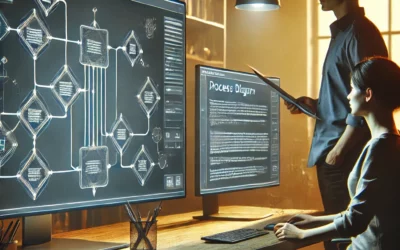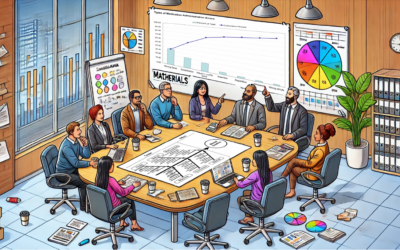The Role of Visual Process Management in Achieving and Adapting Team Consensus
In today’s fast-paced and ever-changing organizational environments, teams must quickly reach consensus to implement decisions efficiently while remaining adaptable as new challenges emerge. Visual process management has proven instrumental in achieving these goals, enabling teams to streamline communication, foster collaboration, and adapt effectively to changing circumstances. Drawing insights from recent research, this article explores how visual tools expedite initial consensus and promote adaptability in dynamic team settings.
Speed of Consensus Through Visual Management
One of the key advantages of visual process management is its ability to present complex information in an easily digestible format. Nicola Bateman’s 2021 research at the University of Leicester demonstrates how visual management boards can significantly enhance team engagement and communication. By providing a centralized platform for tasks, timelines, and progress tracking, visual tools enable teams to quickly align on shared goals and responsibilities. Bateman highlighted how important speed can be. “Time constraints on the part of providers are often cited as a possible barrier to completing a GoCC. Incorporating the GoCC into the admissions process increases time efficiency and minimizes the burden on the staff, compared with engaging in these processes after admission is complete.”
In a manufacturing context, where time-sensitive decisions are crucial, visual management ensures that everyone is on the same page, reducing the likelihood of miscommunication and delays.
Similarly, the University of Michigan’s 2020 study on process maps highlights how visual tools help teams better understand and modify workflows. The research shows that when teams can see their roles and interdependencies mapped out, they are more likely to reach consensus quickly. Visualizing tasks such as assessing, discussing, deciding, documenting, and reassessing allows team members to pinpoint bottlenecks and collectively decide on solutions. This clarity accelerates the decision-making process, particularly in high-pressure environments like healthcare or manufacturing.
Adaptability After Initial Consensus
 While achieving consensus is critical, maintaining flexibility to adapt after initial decisions is equally important. Teams must be prepared to revisit and revise their plans in response to unexpected changes. Bateman’s work emphasizes that visual management tools, such as digital dashboards and physical boards, provide the flexibility needed to adapt quickly. For example, when unexpected issues arise, teams can use these tools to visually update workflows and reassign tasks, ensuring that changes are understood and accepted by all stakeholders.
While achieving consensus is critical, maintaining flexibility to adapt after initial decisions is equally important. Teams must be prepared to revisit and revise their plans in response to unexpected changes. Bateman’s work emphasizes that visual management tools, such as digital dashboards and physical boards, provide the flexibility needed to adapt quickly. For example, when unexpected issues arise, teams can use these tools to visually update workflows and reassign tasks, ensuring that changes are understood and accepted by all stakeholders.
The 2024 study by Shao, Janssens, and Greenwood takes this idea further, proposing a more reflexive approach to visual management. Their research encourages teams to view visual tools not just as static representations of processes but as dynamic frameworks for continuous improvement. This approach promotes a culture of adaptability, where team members regularly review and adjust their workflows in response to new challenges. By incorporating feedback loops into visual systems, organizations can foster a mindset of proactive problem-solving and innovation.
The Intersection of Speed and Adaptability
The true strength of visual process management lies in its ability to balance speed and adaptability. By combining tools that streamline decision-making with frameworks that support ongoing revisions, organizations can create environments where teams thrive. The Michigan study’s process maps, for instance, emphasize reassessment as a core component of workflow management. This ensures that initial decisions are not set in stone but are instead treated as starting points for iterative improvements.
In conclusion, visual process management provides teams with the clarity and flexibility needed to succeed in dynamic environments. By enabling quick consensus and promoting adaptability, these tools empower teams to navigate complexity with confidence. Organizations that invest in visual systems can enhance not only their decision-making speed but also their resilience, ensuring long-term success in an ever-changing world.
Links
Visual process maps to support implementation efforts: a case example, Kononowech, Landis-Lewis, Carpenteret al, https://deepblue.lib.umich.edu/bitstream/handle/2027.42/174078/43058_2020_Article_94.pdf?sequence=1
Shao, K., Janssens, M., & Greenwood, M. (Accepted/In press). Messing up visual management studies: a problematizing review. Journal of Management Studies. https://doi.org/10.1111/joms.13162
Visual management and shopfloor teams – development, implementation and use, Bateman, Lee, and Warrender, https://www.academia.edu/48125193/Visual_management_and_shop_floor_teams_development_implementation_and_use








0 Comments